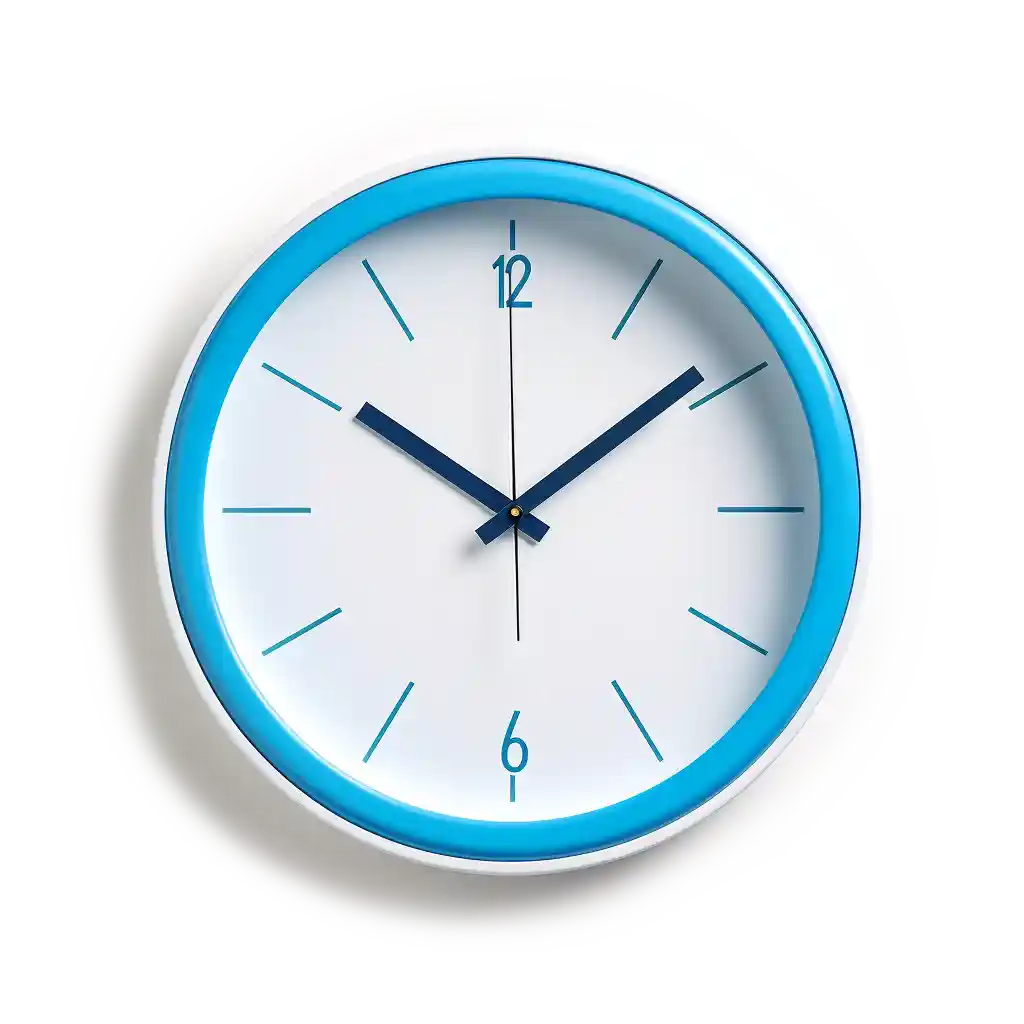World Timezone Difference Calculator
Time Zone Difference Calculator
Found our Free World Time Zone Difference Calculator useful? Bookmark and share it.

Current Time in All 38 Global Time Zones
| Time Zone | Current Time |
|---|
How to Use the Time Zone Difference Calculator
Welcome to the Time Zone Difference Calculator! Follow these simple steps to find the time difference between two time zones and get the current time in each zone.
Step-by-Step Instructions:
Select the First Time Zone:
- Use the first dropdown menu labeled “Select First Time Zone.”
- Scroll through the list and select the desired time zone. The list includes time zones from UTC-12:00 (Baker Island) to UTC+14:00 (Line Islands).
Select the Second Time Zone:
- Use the second dropdown menu labeled “Select Second Time Zone.”
- Similarly, scroll through the list and select the second desired time zone.
View the Time Difference:
- Once you have selected both time zones, the calculator will automatically display the time difference.
- The time difference is shown in hours, minutes, and seconds, along with an indication of whether the second time zone is ahead or behind the first time zone.
Check the Current Time:
- The current time in each selected time zone is displayed below the time difference.
- The time is shown in both 12-hour (AM/PM) and 24-hour formats for your convenience.
- Additionally, the day of the week is displayed for each time zone.
Why Use a Time Zone Difference Calculator?
Managing time across different time zones can be challenging, whether you’re coordinating with remote teams, scheduling international meetings, or planning travel itineraries. Our Time Zone Difference Calculator simplifies this process, ensuring you never miss a crucial meeting or appointment again. The importance of accurate time management cannot be overstated, especially in a globalized world where businesses and individuals constantly interact across different time zones.
Key Benefits:
Precision and Accuracy:
Get precise time differences between any two time zones: Our calculator provides accurate and reliable time differences, enabling you to plan and schedule with confidence. No more guessing or manual calculations—our tool does the hard work for you.
Accurate calculations that account for daylight saving changes and variations in time zones: Daylight saving time can complicate time zone calculations. Our calculator automatically adjusts for these changes, ensuring your time difference calculations are always correct, regardless of seasonal shifts.
User-Friendly Interface:
Simple and intuitive design makes it easy to select time zones and view results: Our calculator features a clean and straightforward interface, allowing you to quickly choose time zones from a comprehensive dropdown menu. You don’t need to be tech-savvy to use it—it’s designed for everyone.
No need for complex calculations or conversions; the calculator does it all for you: Forget about manual conversions and complex math. Our tool instantly calculates the time difference and displays the results in an easy-to-understand format, saving you time and effort.
Versatility:
Suitable for business professionals, travelers, students, and anyone working with global teams: Whether you’re a business executive coordinating with international partners, a traveler planning your next trip, a student connecting with peers abroad, or a remote worker, our calculator is designed to meet your needs.
Supports a wide range of time zones from UTC-12:00 to UTC+14:00: Our extensive time zone support ensures that you can find the exact time difference between virtually any two locations in the world, from the most common to the most obscure time zones.
Real-Time Updates:
- The calculator updates in real-time, providing the current time and day of the week for each selected time zone: As soon as you select your time zones, the calculator displays the current time and day of the week for each location. This real-time feature ensures that you always have the most up-to-date information at your fingertips.


Enhance Your Global Communication with Our Time Zone Difference Calculator
Managing multiple time zones can be a daunting task, especially for global businesses, remote teams, and frequent travelers. Our Time Zone Difference Calculator is designed to simplify this process, providing precise and real-time time differences between any two time zones. Here’s why our tool stands out and how it can significantly improve your global communication and planning.
Comprehensive Global Coverage
Our Time Zone Difference Calculator covers 38 global time zones, from UTC-12:00 to UTC+14:00. This extensive coverage ensures that no matter where you or your contacts are located, you can easily find and compare time zones. This feature is especially beneficial for:
- International Businesses: Coordinate meetings and calls with clients and partners across different continents without confusion.
- Remote Teams: Ensure that team members in different parts of the world are always on the same page regarding meeting times and deadlines.
- Travel Enthusiasts: Plan your trips efficiently by knowing the exact time difference between your current location and your destination.
Real-Time Updates
Time zone differences can change due to daylight saving time adjustments. Our calculator accounts for these changes in real-time, ensuring that you always have the most accurate information. The real-time updates feature means you can:
- Avoid Scheduling Conflicts: By always having the correct time difference at your fingertips, you can avoid double-booking or missing important meetings.
- Enhance Productivity: Knowing the exact time in different regions helps you plan your day better, aligning your work hours with those of your international contacts.
User-Centric Design
Our Time Zone Difference Calculator is designed with the user in mind. The intuitive interface makes it easy for anyone to select time zones and view results. No technical expertise is required. Key design elements include:
- Easy-to-Use Dropdown Menus: Quickly find and select any of the 38 supported time zones.
- Clear Display of Results: The current time and day of the week are displayed for each selected time zone, along with the time difference in hours, minutes, and seconds.
Frequently Asked Questions (FAQ) about Global Time Zones
What is a time zone?
A time zone is a region of the globe that observes a uniform standard time for legal, commercial, and social purposes. Time zones tend to follow the boundaries of countries and their subdivisions instead of strictly following longitude, because it is convenient for areas in close commercial or other communication to keep the same time.
How many time zones are there in the world?
There are 38 time zones in the world, including those offset by whole hours and some by 30 or 45 minutes. Time zones are usually defined by their difference from Coordinated Universal Time (UTC).
What is Coordinated Universal Time (UTC)?
Coordinated Universal Time (UTC) is the primary time standard by which the world regulates clocks and time. It is effectively a successor to Greenwich Mean Time (GMT). UTC is maintained using highly precise atomic clocks combined with the Earth’s rotation.
How does Daylight Saving Time (DST) affect time zones?
Daylight Saving Time (DST) is the practice of setting the clock forward by one hour during the warmer months to extend evening daylight. Many time zones shift forward by one hour during DST. Not all countries observe DST, and the dates for starting and ending DST vary widely.
Why do some time zones have offsets of 30 or 45 minutes?
While most time zones differ from UTC by a whole number of hours, some regions use 30-minute or 45-minute offsets. This is typically due to geographical, political, or social reasons. Examples include India Standard Time (UTC+05:30) and Nepal Time (UTC+05:45).
What is the International Date Line (IDL)?
The International Date Line (IDL) is an imaginary line roughly along the 180° longitude in the Pacific Ocean. It marks the place where each day officially begins. Crossing the IDL from east to west results in a day being added, whereas crossing from west to east results in a day being subtracted.
How can I find the current time in different time zones?
You can use online tools like our Time Zone Difference Calculator, which provides the current time in any selected time zone. These tools update in real-time and account for DST changes.
Why do some countries have multiple time zones?
Countries with large geographical areas, such as the United States, Russia, and Australia, span multiple time zones. This helps maintain a more convenient and consistent schedule for regions spread over vast distances.
How do airlines and international travel handle time zones?
Airlines use Coordinated Universal Time (UTC) for flight planning and scheduling to avoid confusion caused by time zone differences. Passengers are advised to check local arrival and departure times and adjust their watches and devices accordingly.
What is the difference between GMT and UTC?
Greenwich Mean Time (GMT) is a time zone, while Coordinated Universal Time (UTC) is a time standard. GMT is the mean solar time at the Royal Observatory in Greenwich, London. UTC, based on atomic time, is more precise and is the standard used for timekeeping worldwide.
How do I manage meetings across different time zones?
Using tools like our Time Zone Difference Calculator can help you find the best meeting times. Additionally, many calendar applications, like Google Calendar and Outlook, allow you to view and schedule events in multiple time zones.
Why do time zones sometimes change?
Time zones can change due to political decisions, economic reasons, or changes in daylight saving policies. Governments may decide to shift their time zone to better align with their trading partners or to improve energy efficiency.
What are some common misconceptions about time zones?
- Time zones are static: Time zones can change due to political or economic reasons.
- All countries use daylight saving time: Many countries do not observe DST.
- Time zone boundaries are strictly along lines of longitude: Time zones often follow political and geographical boundaries.
How can businesses benefit from understanding time zones?
Businesses that operate internationally need to schedule meetings, coordinate work, and plan projects across different time zones. Understanding time zones helps in avoiding scheduling conflicts, improving communication, and ensuring that business operations run smoothly globally.
How do I calculate time differences manually?
To calculate the time difference manually, find the UTC offset for each time zone. Subtract the smaller offset from the larger offset to get the time difference. Adjust for DST if applicable. However, using an online calculator is quicker and reduces the risk of errors.

Time Zones and Payroll
How do time zones affect payroll processing?
Time zones can significantly impact payroll processing for businesses with employees in multiple regions. It is essential to ensure that all working hours are accurately recorded in the correct time zones to calculate wages, overtime, and deductions properly.
How can payroll systems handle employees in different time zones?
Modern payroll systems, like TimeTrex, allow businesses to input and manage employee work hours in their respective time zones. These systems automatically convert and standardize the hours for payroll calculations, ensuring accuracy and compliance.
What challenges do time zones pose for payroll?
Time zones can create challenges such as:
- Accurate Time Tracking: Ensuring that employees’ work hours are correctly recorded according to their local time zone.
- Overtime Calculation: Properly calculating overtime when employees work across different time zones.
- Pay Date Coordination: Coordinating pay dates across different regions to ensure timely payment for all employees.
How does Daylight Saving Time (DST) impact payroll?
Daylight Saving Time can affect payroll by changing the total number of hours worked during the DST transition. Payroll systems need to account for the extra or missing hour when DST begins or ends to ensure accurate payroll calculations.
How can businesses ensure compliance with labor laws across different time zones?
To ensure compliance, businesses should:
- Understand Local Labor Laws: Stay informed about the labor laws in each region where employees are located, including overtime rules, minimum wage rates, and pay frequency requirements.
- Use Payroll Software: Utilize payroll software that supports multi-state or multi-country payroll to automate compliance and reduce errors.
- Regular Audits: Conduct regular audits to ensure that payroll practices align with local regulations.
Can payroll software handle different currencies and time zones?
Yes, many payroll software solutions, including TimeTrex, can manage different currencies and time zones. They allow businesses to process payroll for employees in various countries, converting work hours and wages to the appropriate currency and time zone.
How should businesses handle payroll for remote employees in different time zones?
For remote employees, businesses should:
- Accurately Track Hours: Use time-tracking software to record the actual hours worked by remote employees in their local time zone.
- Standardize Pay Periods: Establish standardized pay periods that consider the time zone differences to ensure timely payroll processing.
- Communicate Clearly: Clearly communicate payroll schedules, time-tracking procedures, and any time zone-related considerations to remote employees.
How do holidays and weekends in different time zones affect payroll?
Holidays and weekends vary across regions and can affect payroll processing. Payroll systems need to account for these differences to ensure employees are paid correctly for holiday work, and pay dates are adjusted for weekends and public holidays.
What is the best way to manage payroll cut-off times in different time zones?
To manage payroll cut-off times effectively:
- Set Clear Deadlines: Establish clear deadlines for submitting timesheets and payroll information, considering the time zone differences.
- Automate Processes: Use payroll software to automate cut-off times and ensure all payroll data is collected and processed on time.
- Communicate with Employees: Inform employees about the cut-off times and any changes to the payroll schedule due to time zone differences.
How can payroll discrepancies due to time zone differences be minimized?
Minimize payroll discrepancies by:
- Using Accurate Time-Tracking Tools: Implement reliable time-tracking software that records hours worked accurately according to each employee’s time zone.
- Regular Reconciliation: Regularly reconcile time records and payroll data to identify and correct any discrepancies.
- Training and Support: Provide training for employees and payroll staff on time zone management and the correct use of time-tracking and payroll systems.
Disclaimer: The content provided on this webpage is for informational purposes only and is not intended to be a substitute for professional advice. While we strive to ensure the accuracy and timeliness of the information presented here, the details may change over time or vary in different jurisdictions. Therefore, we do not guarantee the completeness, reliability, or absolute accuracy of this information. The information on this page should not be used as a basis for making legal, financial, or any other key decisions. We strongly advise consulting with a qualified professional or expert in the relevant field for specific advice, guidance, or services. By using this webpage, you acknowledge that the information is offered “as is” and that we are not liable for any errors, omissions, or inaccuracies in the content, nor for any actions taken based on the information provided. We shall not be held liable for any direct, indirect, incidental, consequential, or punitive damages arising out of your access to, use of, or reliance on any content on this page.
Trusted By
Trusted by 3.2M+ Employees: 21 Years of Service Across Startups to Fortune 500 Enterprises
Join our ever-growing community of satisfied customers today and experience the unparalleled benefits of TimeTrex.










Strength In Numbers
Join The Companies Already Benefiting From TimeTrex
Time To Clock-In
Start your 30-day free trial!
Experience the Ultimate Workforce Solution and Revolutionize Your Business Today
- Eliminate Errors
- Simple & Easy To Use
- Real-time Reporting

Saving businesses time and money through better workforce management since 2003.
Copyright © 2025 TimeTrex. All Rights Reserved.

